Learn how to make this warming Saag Recipe, a thick and luscious curry made from vibrant leafy greens and spices.
In the native tongue, this North Indian treasure is referred to as ‘Sarson da Saag’, a peppery blend of mustard leaves and various greens beaten with butter, onions, garlic and green chillies.
Serve with Makki di Roti (cornmeal flatbread) for a feast plucked straight from India’s land of the five rivers, Punjab.
If you love bold flavours and plenty of spice, this home-style Saag recipe (reminiscent of grandma’s cooking) will tick all your boxes.
All I want to eat on cold days is a bowl of steaming Saag with some delicious Makki di Roti. It’s basically central heating for the soul.
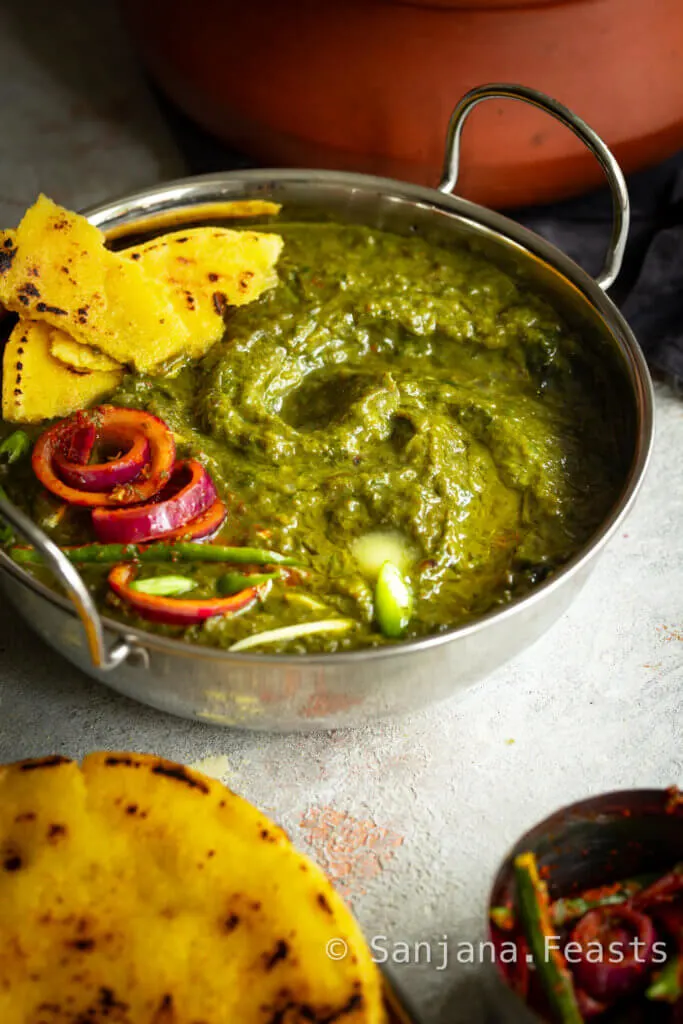
This Saag recipe is…
- Vegetarian
- Gluten free
- Nut free
- Easy to make
- Uses only a handful of ingredients
What is Saag?
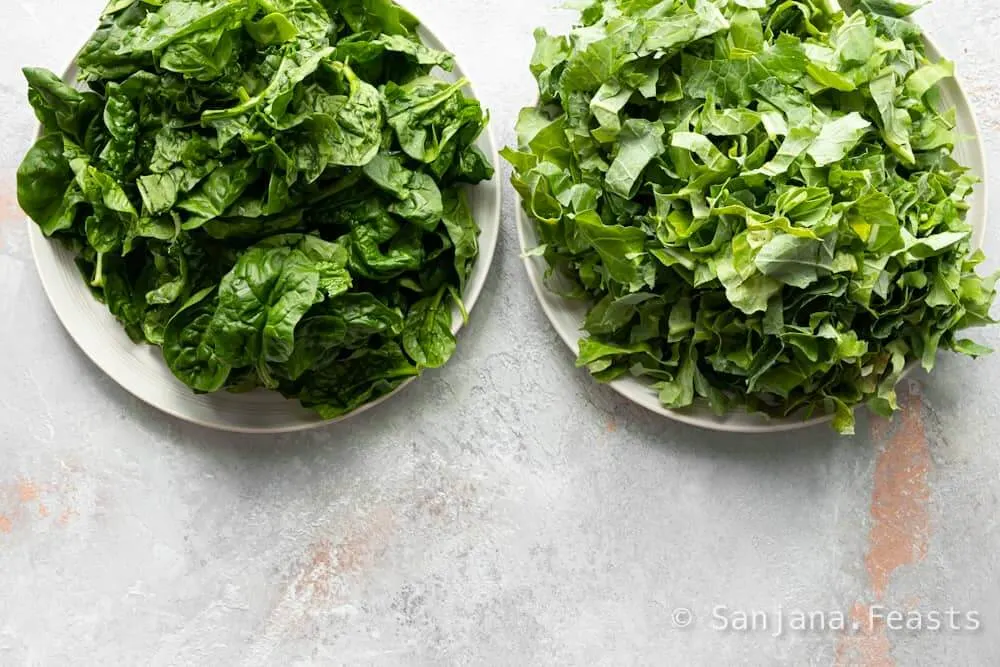
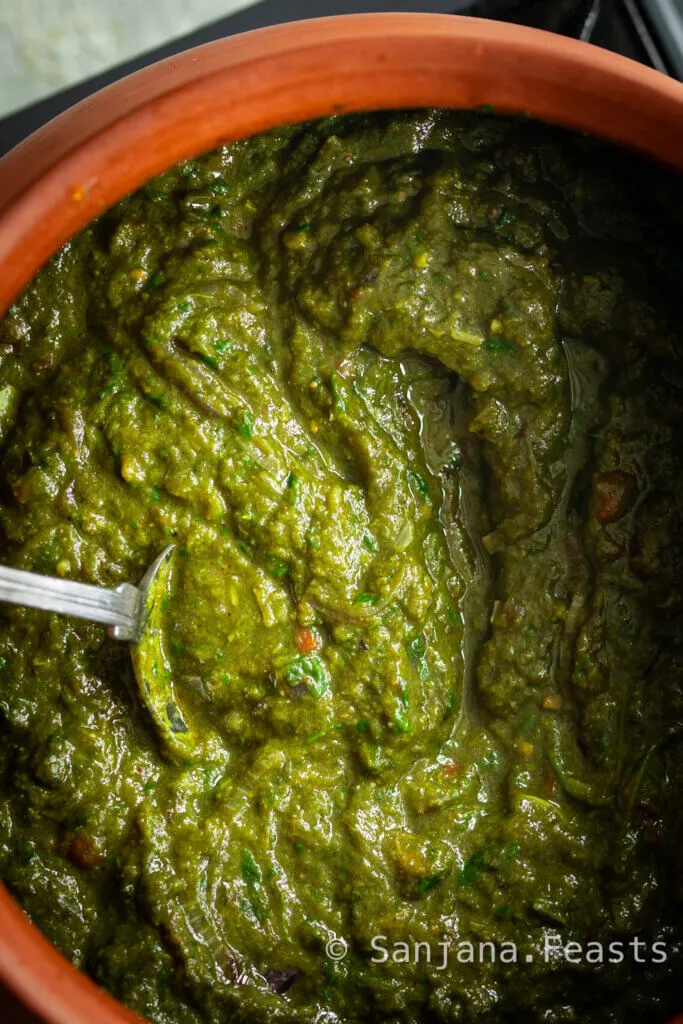
Saag, or ‘sag’ is a dish of leafy greens loved by many across the Indian subcontinent and in Indian communities around the world.
There are many ways to make this famous dish and I can’t wait to share my easy, home-cooked Saag recipe with you.
It’s a wholesome, rich and nutritious curry that’s popular during winter months, but can be enjoyed all year round.
Where does Saag come from?

Saag is known to originate from Punjab, in modern day North India and Pakistan.
During winter, seasonal greens are abundant and therefore, cooked together until thick and creamy.
The end result is delicious with a dollop of butter and some freshly-baked Makki di Roti (cornmeal flatbread) for scooping it up with.
Today, Saag is a dish Indians around the world turn to for a taste of comfort and nostalgia.
Sarson ka Saag is an intensely warming Punjabi soul food.
How many different types of Saag are there?
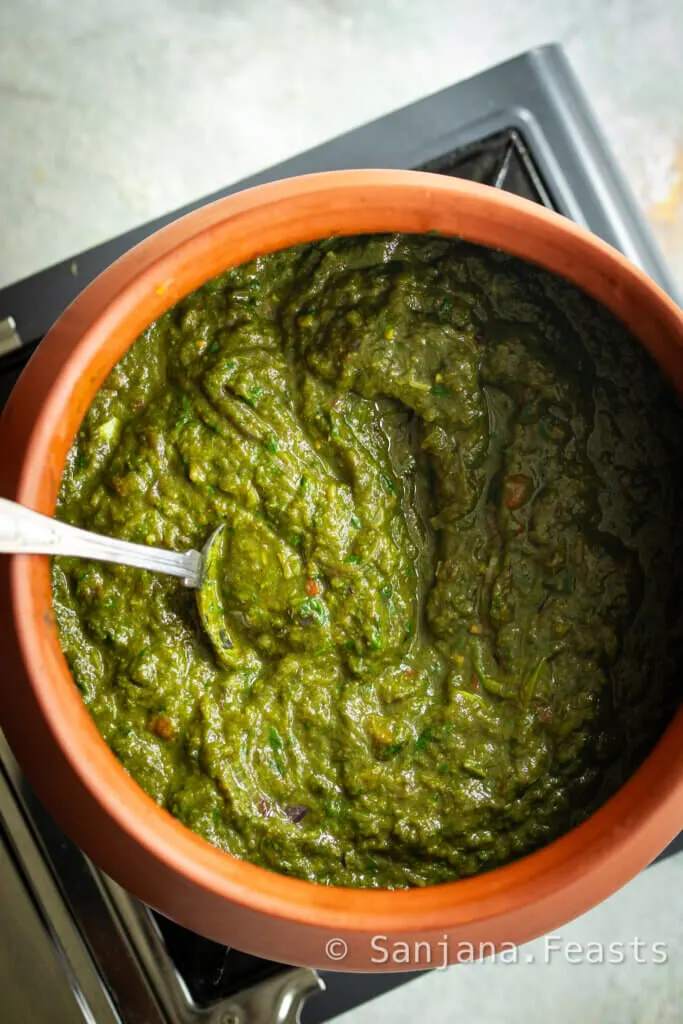
Saag is a culinary chameleon, adapting to the diverse landscapes and traditions of Punjab’s fertile lands.
From the robust mustard greens known as ‘sarson ka saag’ to the delicate fenugreek leaves called ‘methi saag’, each variety of leafy green brings its unique character to the dish.
There’s also palak, bathua (goosefoot), chaulai (amaranth) and chane ka saag (chickpea leaves).
Each type of saag has a distinct flavour.
I make my saag with mustard leaves, spinach and fenugreek leaves.
What’s the difference between Saag and palak?
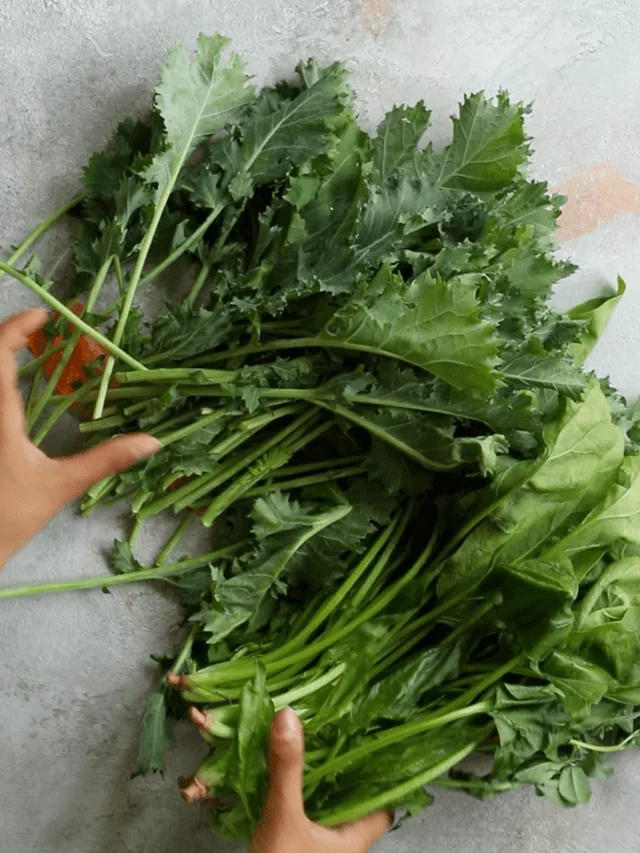
The difference between saag and palak is subtle.
While both dishes feature a blend of greens, saag embraces a broader spectrum of leafy vegetables, often incorporating mustard greens, spinach, fenugreek, and amaranth.
Palak, as its name implies, remains faithful to its namesake, calling for a pure spinach base.
In any case, Popeye would be proud.
Saag Recipe: What type of greens are best for Saag?
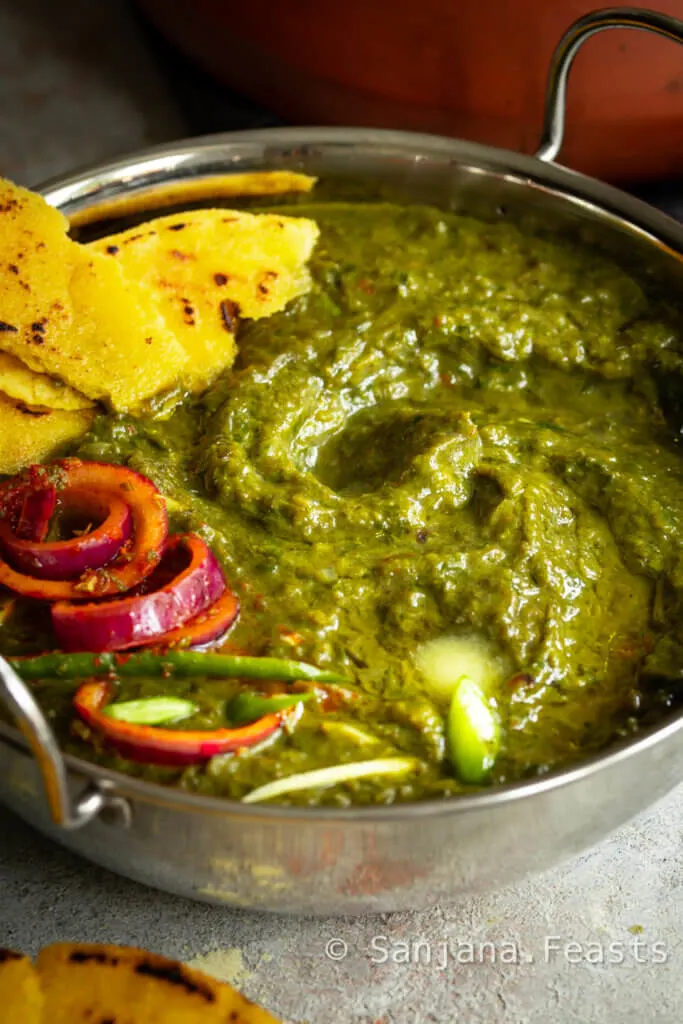
In all honesty, the beauty of Saag is lies in its’ versatility.
In this way, feel free to use what’s local, seasonal and inexpensive to you.
My preference is to use a blend of spinach, mustard greens and fenugreek leaves, since I can get these easily at my local Indian fruit and vegetable market.
What can I use instead of mustard greens?

If you’re having trouble finding mustard greens, you could substitute these with kale, chard and spring greens. Easy.
Back in the days when Indian vegetables weren’t so widely available in the UK, the local community would prepare Saag with green cabbage, Brussel’s sprouts and broccoli.
More Indian recipes you might like
In a pinch, a tin (can) of cooked spinach puree or frozen spinach can also be used in place of fresh.
Note that your saag recipe is unique, and the leafy greens you introduce to it will be what it ultimately tastes like.

Follow my recipe below for my favourite saag recipe.
It’s so deliciously Desi in flavour. I don’t shy away from onions, garlic, ginger, chillies and of course, butter!
Tips for making Saag
- Mix and match your greens. This is how you create depth of flavour.
- A pinch of baking soda (bicarbonate of soda) will help the greens cook quickly.
- Butter is essential to any saag recipe. Be mindful if your butter is salted, you may want to add less salt to the dish.
- Add aromatics like onions, ginger, garlic, chillies and garam masala at different stages during the cooking process to create complex layers of flavour.
- Serve with raw onions and chillies for a final whack of intensity. This is intensely warming soul food.
Can I use frozen spinach in this Saag recipe?
You may use frozen or tinned spinach in place of fresh spinach when making Saag.
What can I use instead of methi in Saag recipe?
If fresh fenugreek is unavailable, substitute an equal amount of additional mustard leaf or spinach. Stir half a teaspoon of dried fenugreek leaves (kasoori methi) into the dish at the end.
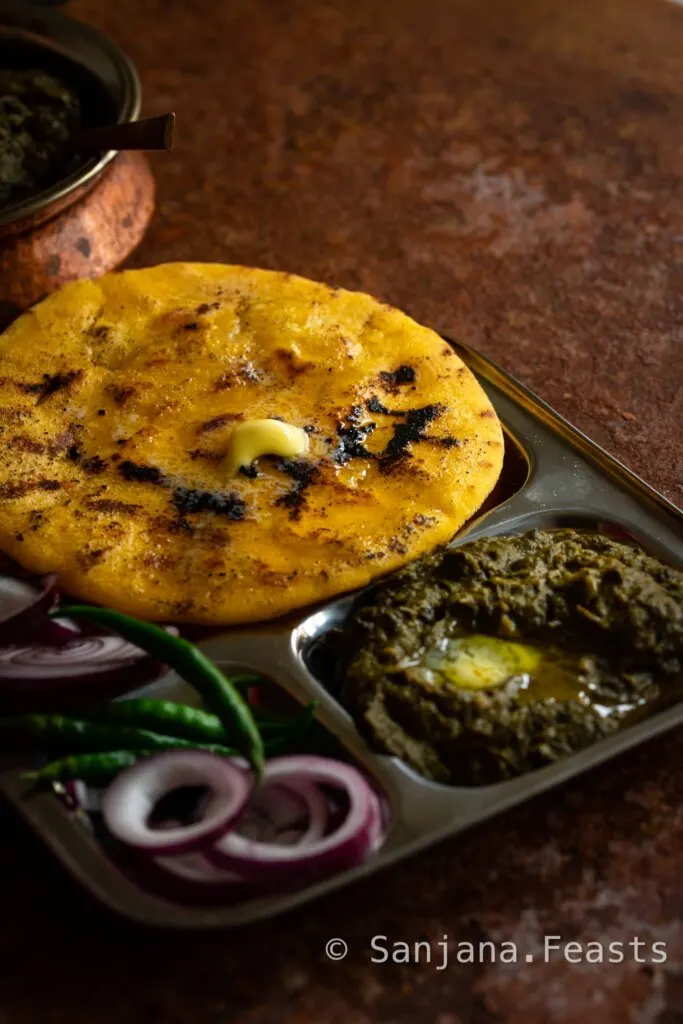
What can I use instead of mustard leaves in this Saag recipe?
In a pinch, you can use a blend of any greens you have, even 100% spinach for making saag.
Simply reduce the amount of butter in the recipe to 70g and add 2 tablespoons of edible mustard oil.
Ingredients for Saag
- Mustard leaves – available from Indian food shops
- Spinach – any spinach will do for this recipe
- Fenugreek leaves – available from Indian food shops
- Onion – regular brown onions or red onions are both fine
- Ginger – we will add ginger at two stages in the recipe
- Garlic – saag without garlic is like the Tin Man without a heart
- Green chillies – as many or as few as you like
- Fine cornmeal – cornmeal helps to thicken the saag
- Salt – be careful with added salt if your butter is already salted
- Baking soda – this helps to cook the greens quickly
- Butter – I use salted butter
- Black cardamom – adds a delicious, smoky depth to the Saag
- Black stone flower – my special touch. I love the fragrance of this ingredient. Learn more about black stone flower in this post.
- Kashmiri red chilli – dried red chilli with a mild heat (optional)
- Tomato – ensure it’s very finely chopped
- Turmeric – ground turmeric is available in all supermarkets
- Garam masala – either homemade or shop bough. Get my recipe for garam masala here.
How to make Saag recipe | Step-by-step recipe for Punjabi Saag | Sarson da Saag recipe
1. Prepare the leafy greens
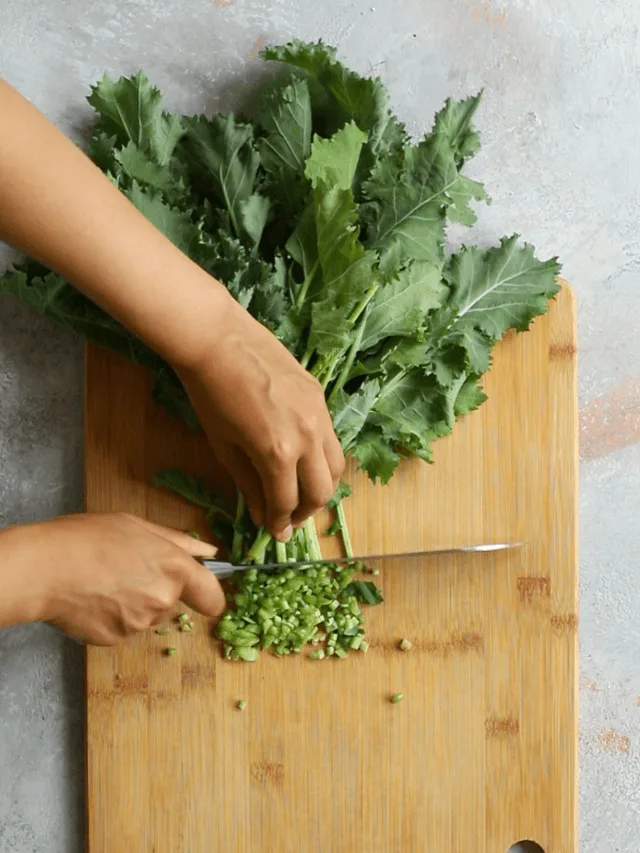
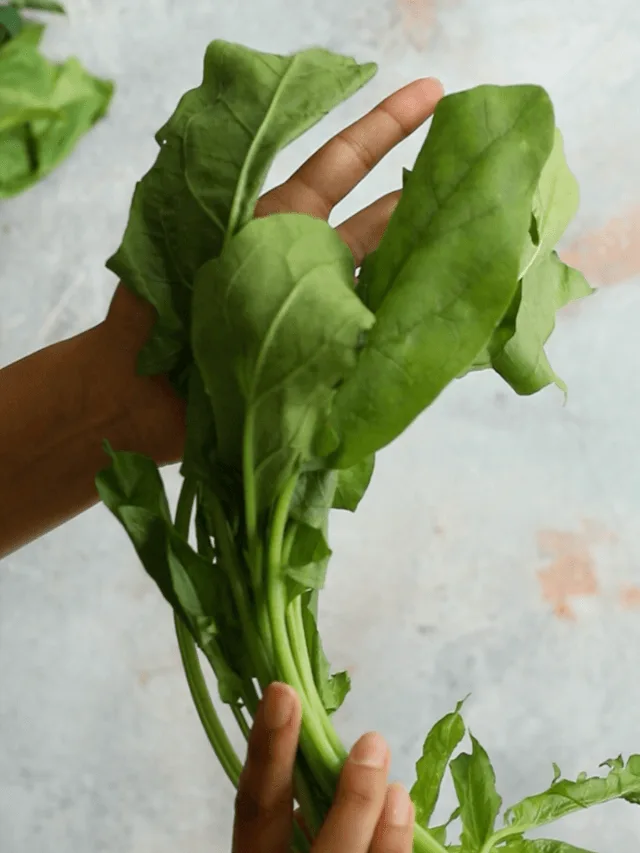
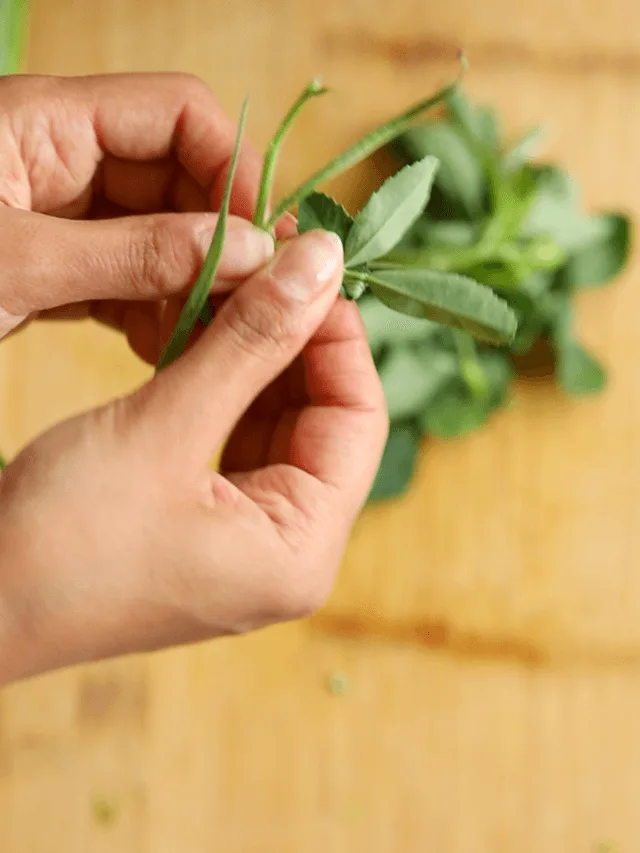
Wash all greens before using.
Mustard leaves and spinach: Trim off the base of the stems (about 2cm from the root). If you’re using leaf spinach, you can skip this step. Chop finely.
Fenugreek leaves: Pick the leaves from the stems and chop finely. Discard the stems.
2. Pressure cook the greens until soft
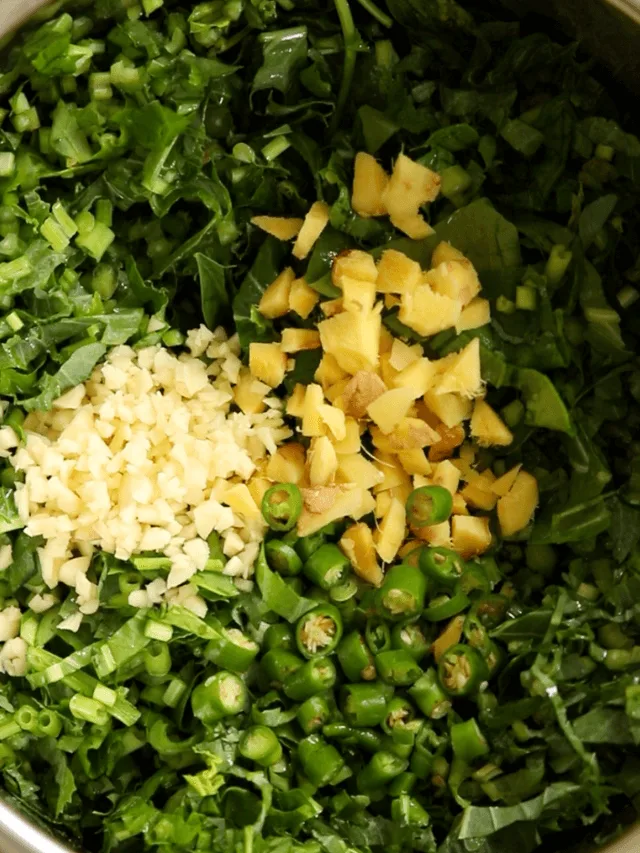
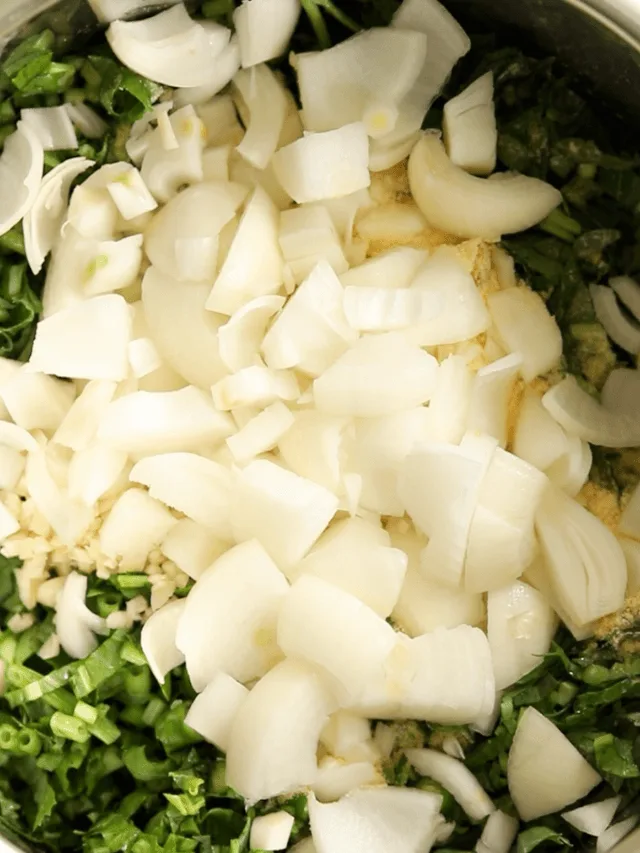
Pile all the ingredients for pressure cooking (measurements in recipe card below) into a pressure cooker.
Pressure cook for 15 minutes on high (Instant Pot), or in a traditional pressure cooker, cook for 5 whistles.

Quick release the pressure and allow the Saag to cool.
3. Blend the Saag to a coarse purée
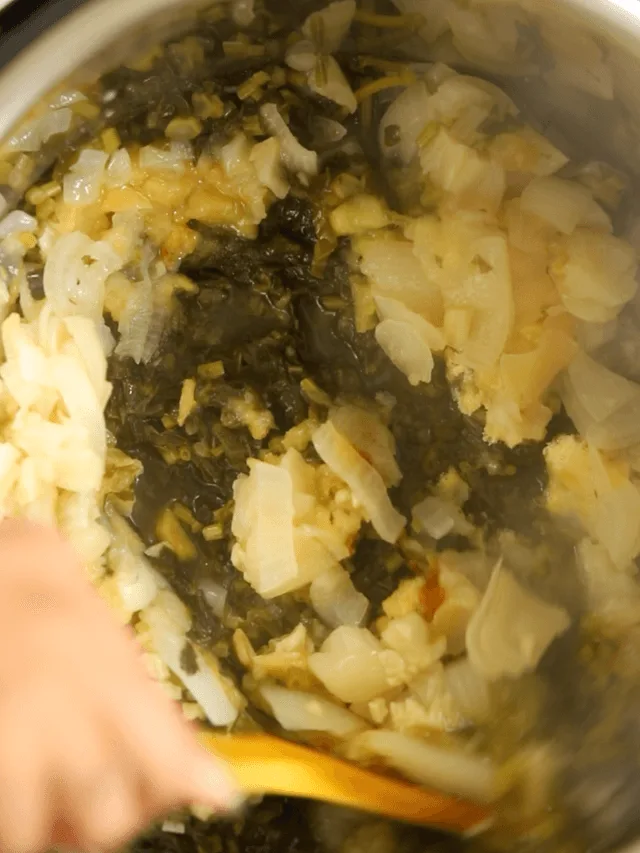
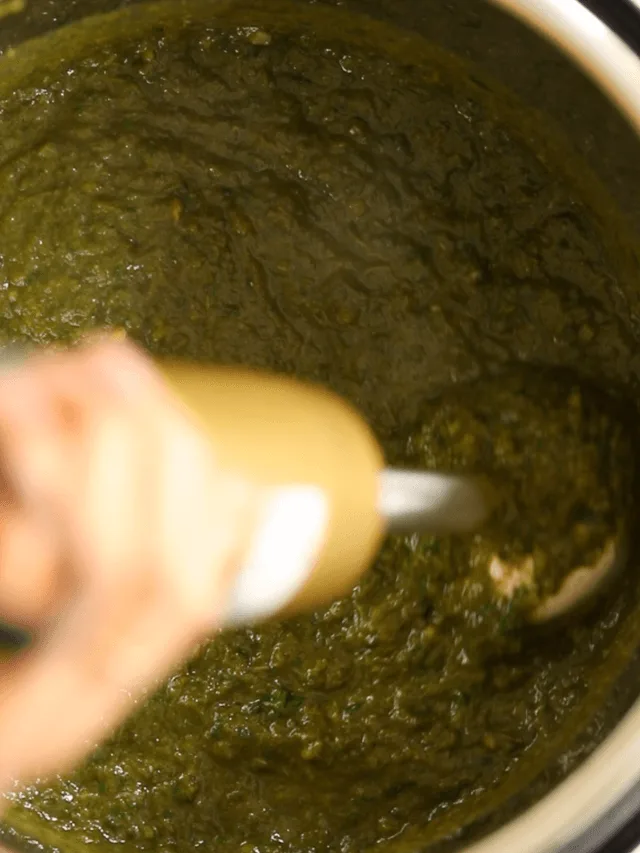
Traditionally, Saag is beaten with a spurtle-like instrument until it’s thick and velvety. This can take up to an hour.
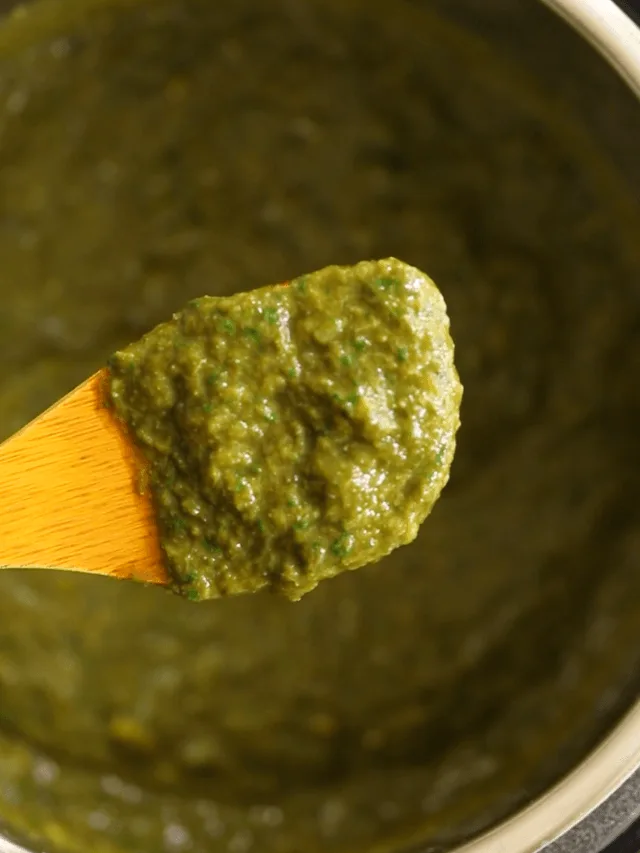
Use an immersion blender to achieve a similar result. Blend until it’s a coarse, sauce-like texture.
4. Brown the onions in butter
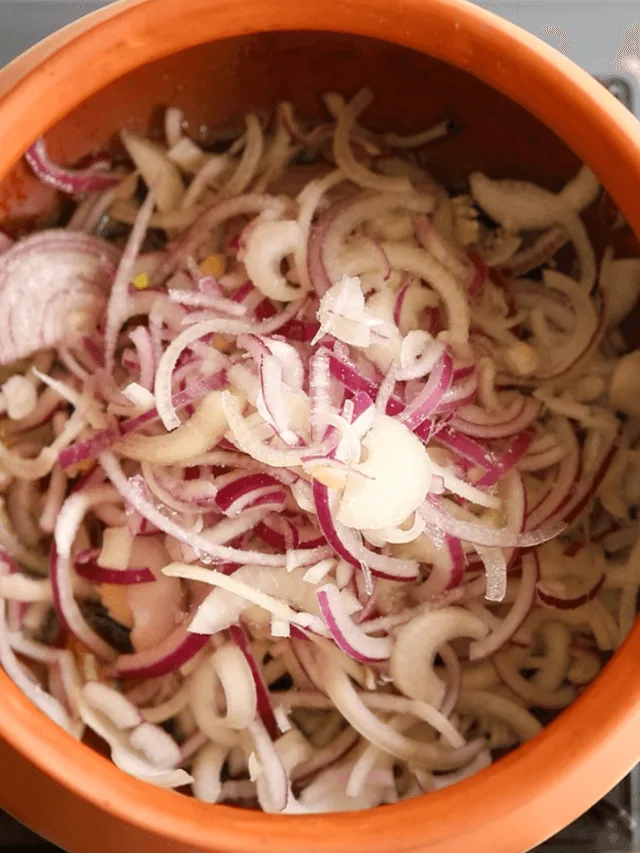
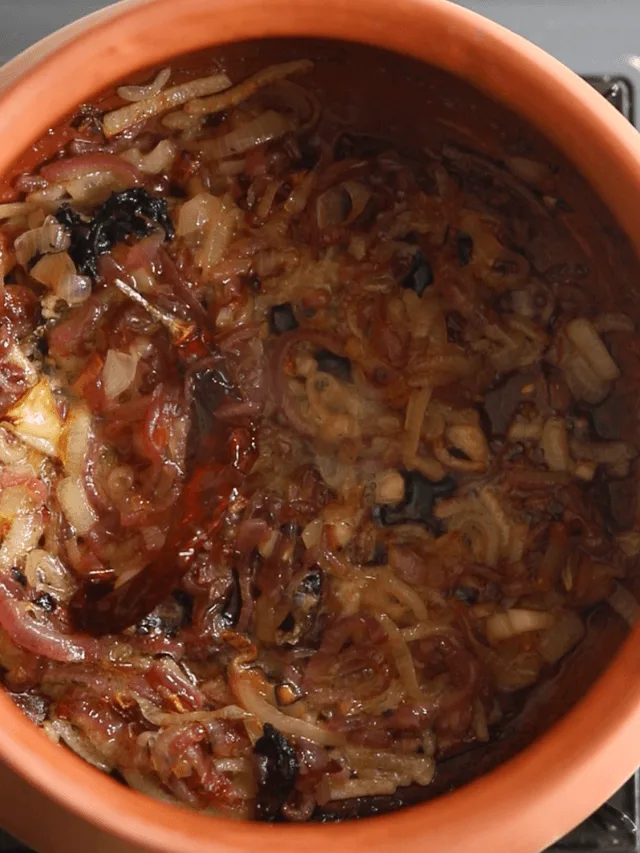
Melt some butter in a separate pot and add the whole spices, onions and salt.
Cook over a medium heat for around 10 minutes, until the onions have caramelised.
5. Add the remaining aromatics and spices

Once the onions are a deep golden brown colour and of a sticky, jammy texture, add the remaining ginger, garlic, chilli, tomato, turmeric and half of the garam masala.
Stir and cook for a few minutes longer.
6. Stir the Saag into the tadka
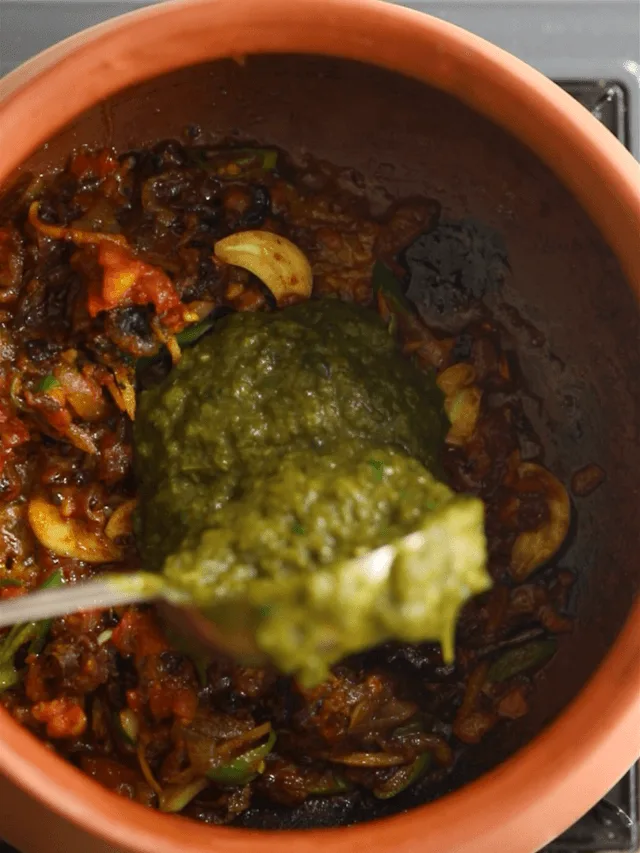
Carefully tip the cooked Saag mixture into the pot and stir well. Bring to a gentle simmer.
7. Finish the Saag with butter and garam masala
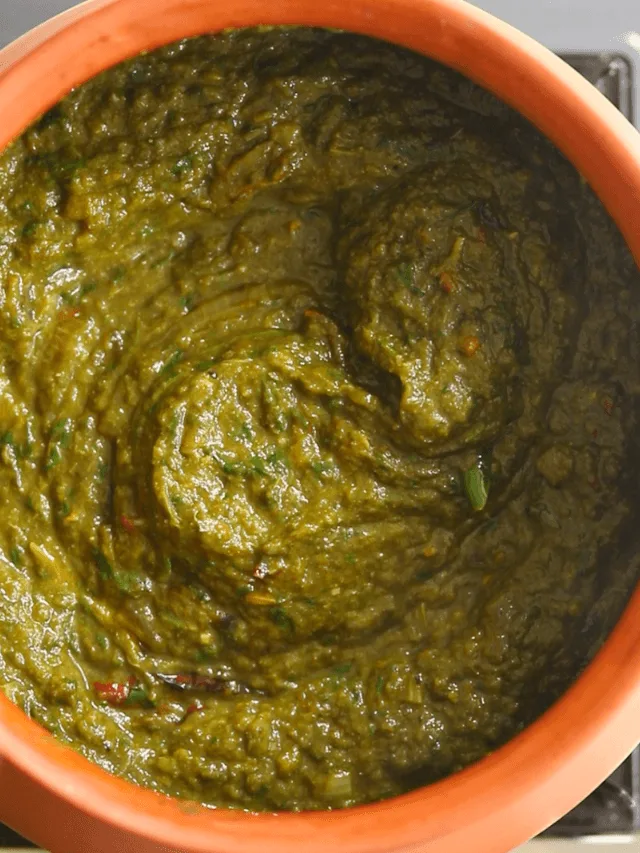
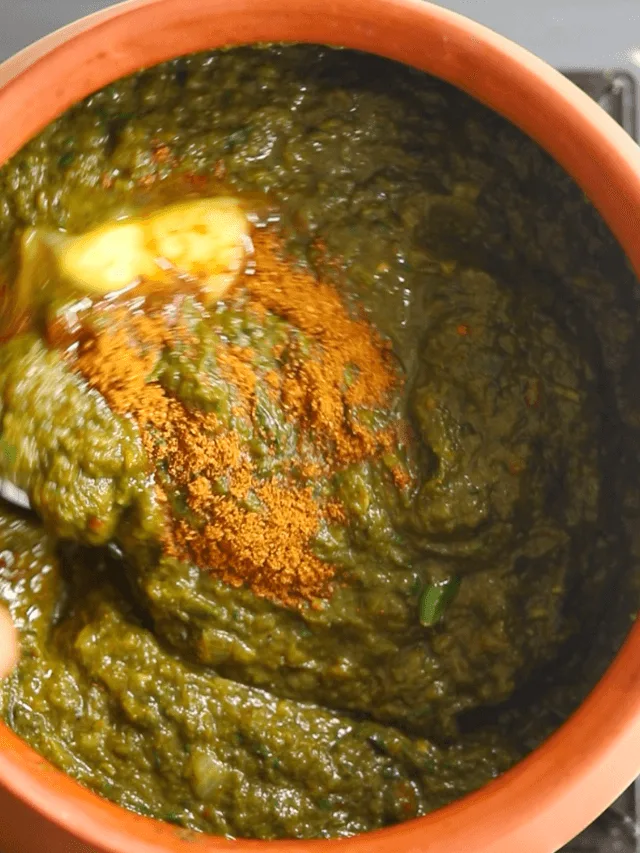
Finally, add some more butter and garam masala. Melt and mix.
Serve the saag hot with the optional garnishes and a pile of Makki di Roti.
Saag recipe | How to make Punjabi Saag | Sarson da Saag recipe
Saag Recipe
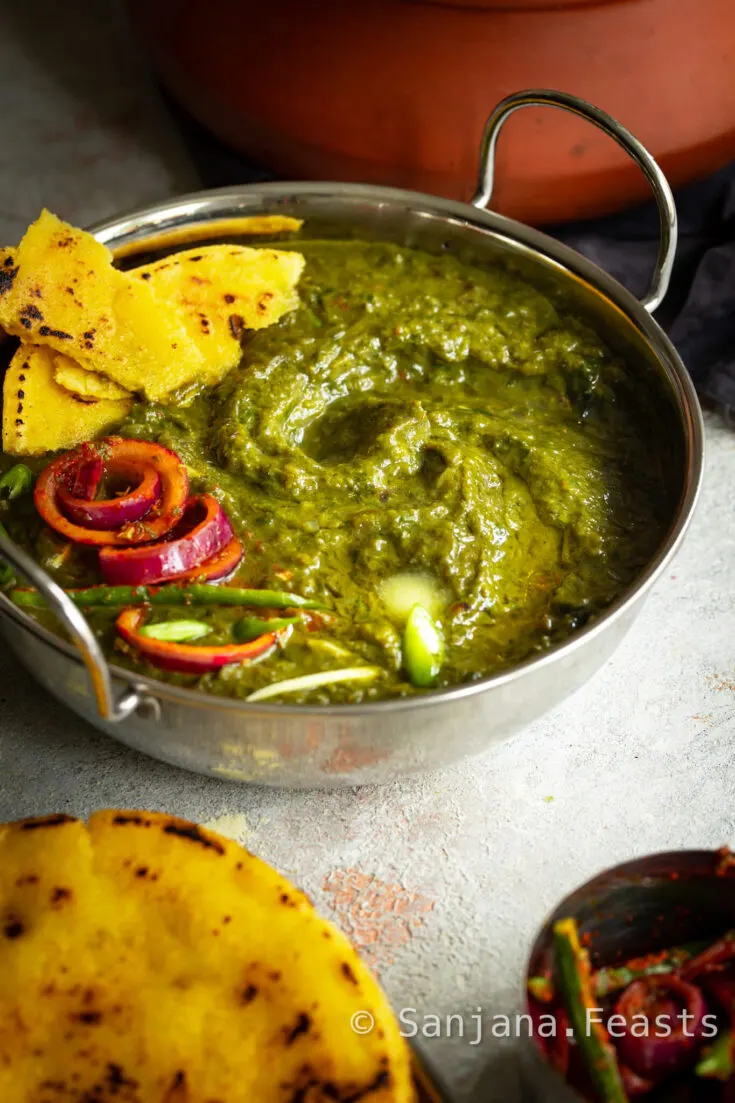
Warming Punjabi Saag is a curry made from vibrant greens and spices. In the native tongue, it's referred to as Sarson da Saag, a peppery blend of mustard leaves and various greens beaten with ghee (clarified butter), onions, garlic and green chillies. Serve with Makki di Roti (cornmeal flatbread) for feast plucked straight from India's land of the five rivers, Punjab.
Ingredients
For pressure cooking
- 250g mustard leaves, washed
- 250g spinach, washed
- 100g fresh fenugreek, washed
- 1 large onion, peeled and cut into rough chunks
- 2cm piece ginger, peeled and finely chopped
- 5 cloves garlic, peeled and finely chopped
- 2-3 hot green chillies, stalks removed and finely chopped
- 2 tbsp fine cornmeal
- 1/4 tsp salt
- 1/8 tsp baking soda (optional, to cook the greens quickly)
- 300ml water
To finish the dish
- 100g salted butter
- 1 black cardamom
- 1 piece black stone flower
- 1 dried Kashmiri red chilli
- 2 large onions, finely sliced
- 1/4 tsp salt
- 2.5cm piece ginger, julienned
- 5 cloves garlic, finely sliced
- 1-2 green chillies, finely sliced
- 1 large tomato, finely chopped or blended
- 1/2 tsp turmeric
- 2 tsp garam masala
To garnish
- 1 small red or white onion, cut into rings (optional)
- 2 green chillies, finely sliced (optional)
- Extra butter (as much as you like, optional)
Instructions
- Trim any tough and woody stems from the mustard leaves and spinach, about 2cm from the root. We will be using the remaining stems. Chop these finely.

- Pick the leaves from the fenugreek and discard the stems. Finely chop the leaves and combine with the chopped mustard leaves and spinach.

- Place all the ingredients for the pressure cooker inside the pot and cook on medium-high for 15 minutes (about 5 whistles).

- Carefully remove the cooker lid and allow the saag to cool slightly.

- Use an immersion blender to blend the saag to a coarse purée. If you like it smoother, blend for longer. You can also do this in a blender but ensure the mixture has cooled down first.

- In a separate pot, melt 75g of butter over a medium heat. Add the black cardamom, black stone flower, dried red chilli, onions and salt. Cook, stirring frequently until the onions have cooked down and caramelised very well, about 10 minutes.

- Add the sliced garlic, ginger juliennes and green chillies, Stir and cook for a further 3-4 minutes. Next, add the tomato, turmeric and 1 tsp garam masala. Stir and cook for 2 minutes before adding the cooked saag mixture. Give the saag a thorough mix and bring it to a bubbling simmer.

- Once the saag is simmering (it might spit so you may want to cover with a lid), cook for 5 minutes longer.

- Finally, stir in the remaining 25g butter and 1 tsp garam masala. The saag is now ready.

- Serve hot garnished with the additional garnishes (onions, chillies and butter), if using. It's delicious with Makki di Roti.

Notes
- Store any leftovers in an airtight container (refrigerate) for up to 3 days.
- Freeze in a freezer-safe container for up to 3 months, Defrost at room temperature and heat through until piping hot before serving.
- Serve Saag with Makki di Roti.
- Replace greens used in this recipe with an equal weight of any leafy greens or green vegetables of your choice.
Nutrition Information:
Yield: 4 Serving Size: 1Amount Per Serving: Calories: 573Total Fat: 36gSaturated Fat: 18gTrans Fat: 1gUnsaturated Fat: 13gCholesterol: 87mgSodium: 1911mgCarbohydrates: 49gFiber: 14gSugar: 9gProtein: 22g
Pin this recipe for later
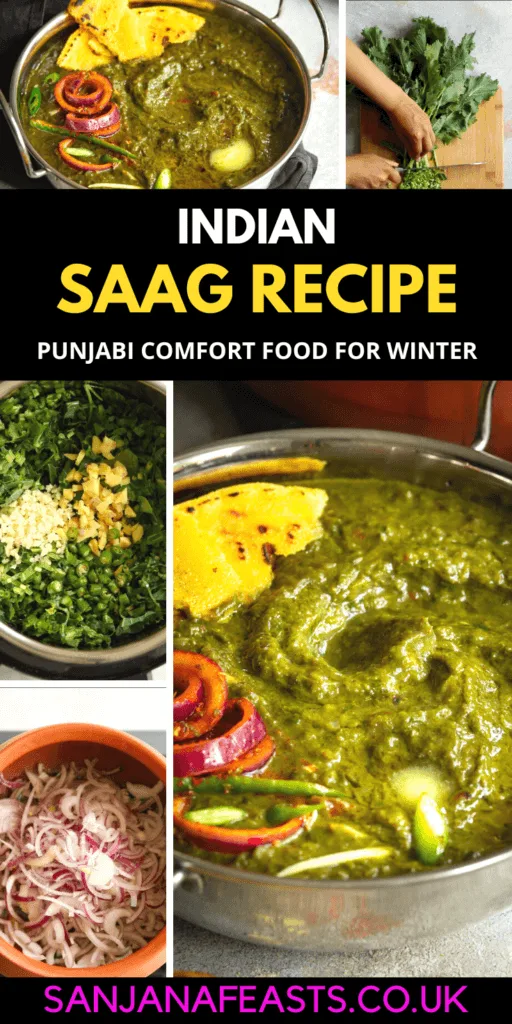
More recipes to master
10 Paneer Curry Recipes You'll Love
Try one of these delicious paneer curry recipes the next time you're cooking up an Indian feast!
Matar Paneer
Matar Paneer is a popular Indian dish made with paneer cheese and peas in a creamy tomato-based sauce. It's a delicious and nutritious vegetarian curry.
This recipe for Matar Paneer is also easy to make, making it an amazing option for home cooks or people new to Indian food.
Matar Paneer is typically served with rice, naan or roti, but feel free to choose your favourite accompaniments.
Restaurant-Style Shahi Paneer
Soft, creamy Mughlai Restaurant-Style Shahi Paneer is a true celebration of rich flavours and treasured spices. Scoop this vegetarian curry up with hot paratha, naan or roti.
If you’re not a bread lover, this Shahi Paneer also pairs beautifully with rice, should you wish to opt for a simple curry and rice bowl for dinner.
Paneer Tikka Masala
Learn how to make the most delicious Paneer Tikka Masala, just like your favourite Indian restaurant!
Pieces of paneer (cottage cheese) and vegetables are first marinated in yoghurt and spices, and then skewered and grilled to smoky perfection.
The tikka pieces are then removed from the skewer and folded into a creamy curry sauce made with tomatoes, spices and cream. Here's an easy to follow video recipe and video.
The Ultimate Saag Paneer
The Ultimate Saag Paneer recipe is pure MAGIC! Soft paneer chunks in a creamy mustard greens & spinach curry. Every bite will melt in your mouth.
Saag Paneer is the more character-laden cousin of Palak Paneer, made with mixed greens like mustard leaves (sarson) instead of spinach alone.
The velvety texture and subtle spicing of this recipe for Saag Paneer ensures the peppery mustard leaves and juicy paneer are the true stars of the show.
Brown Butter Paneer Makhani
I thought I knew true love, but then I met Brown Butter Paneer Makhani. The toasty, nutty aroma of brown butter (or beurre noisette) transforms the traditional Paneer Makhani we all know and love into something even more sensational.
Combine aromatic spices with a creamy cashew and tomato base, gently brown some butter in a pan and create the Makhani-style sauce of your dreams. This is the only way I’ll make Paneer Makhani from now on.
Paneer Curry
Try this easy Paneer Curry recipe with a delicious mix of aromatic Indian spices. Sauté the soft cubes of Indian cottage cheese in a golden onion and tomato masala. The flavours of cumin, black pepper, ginger and garam masala add warmth and excitement.
A kadai-fried curry like this (without too much sauce) is perfect to serve with naan, roti or paratha. I even like using it as a dosa filling when making Paneer Masala Dosa. If you prefer your Paneer Curry with a thick Indian gravy, try Paneer Makhani or Matar Paneer.
Melt-Away Malai Kofta
I call this creamy paneer kofta curry Melt-Away Malai Kofta simply because they melt away as soon as you put them in your mouth. Malai Kofta are the ultimate North Indian vegetarian curry recipe to dazzle friends and family.
My simple paneer and potato kofta are golden on the outside and a brilliant white colour on the inside. Each bite is soft, a little spongy and slick with a smooth and creamy tomato sauce. In my home, Malai Kofta is an essential curry for special occasions.
This Indian vegetarian curry of paneer (cheese) and potato kofta is a real celebration of rich flavours and warming spices.
Easy Creamy Palak Paneer
I will always order Palak Paneer if it’s on the menu in a restaurant. For me, a bowl of creamy spinach and cheese is mandatory. I could forgo rice and bread and quite simply eat a bowl of Palak Paneer with a spoon.
The trick to a super green sauce is to cook the spinach as little as possible. Just apply enough heat to wilt it at the beginning and heat the finished sauce just to warm all the ingredients through.
Paneer Butter Masala
One of my favourite paneer dishes is Paneer Butter Masala, whereby chunks of soft paneer are folded into a creamy and sharp tomato sauce made luxurious with unadulterated butter.
Hand me a teardrop sheet of puffy, soft naan to mop up all of that sauce and I’m in seventh heaven.
Restaurant-Style Matar Paneer
The soft and creamy cubes of Indian cottage cheese pairs so well with simple fresh garden peas, making this vegetarian curry a pillar of Desi restaurant and home-style cooking.
The base gravy for this Matar Paneer recipe contains ground almonds and tomatoes for a delectable creaminess and sharp tang.
The spicing is warm but complex, making you wonder if you really just made that at home in the comfort of your own kitchen, without having to go to a restaurant or pick up a takeaway menu. Mad skills.
With love and buttery Saag,
Sanjana


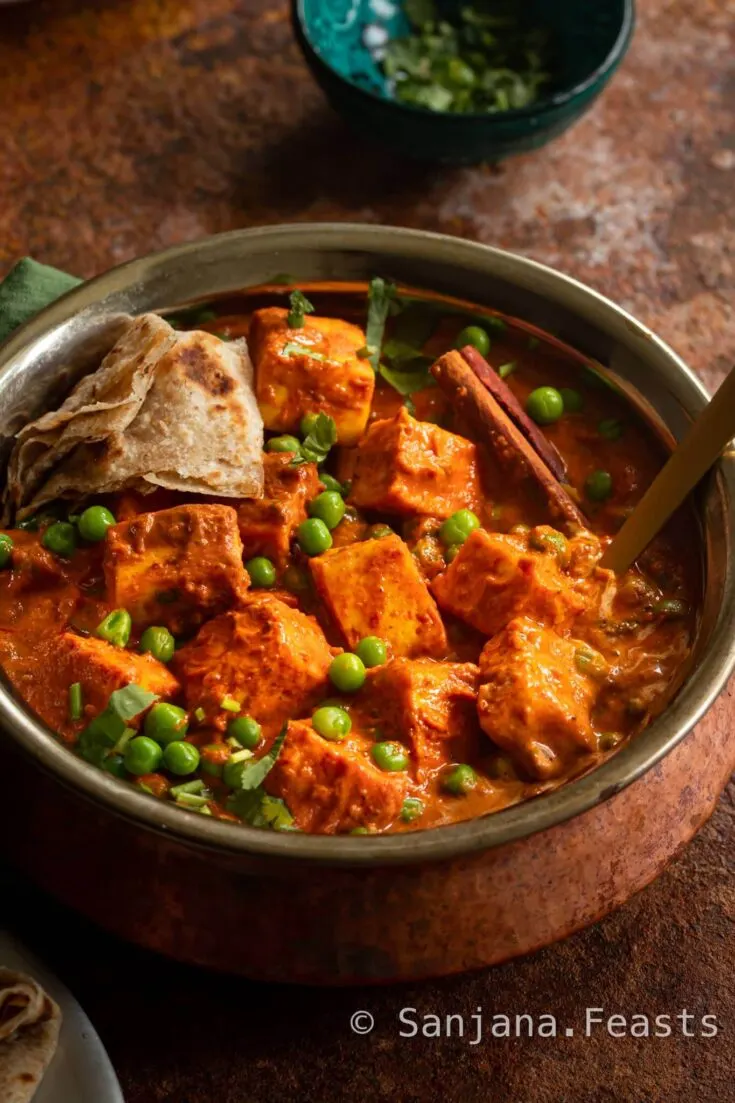
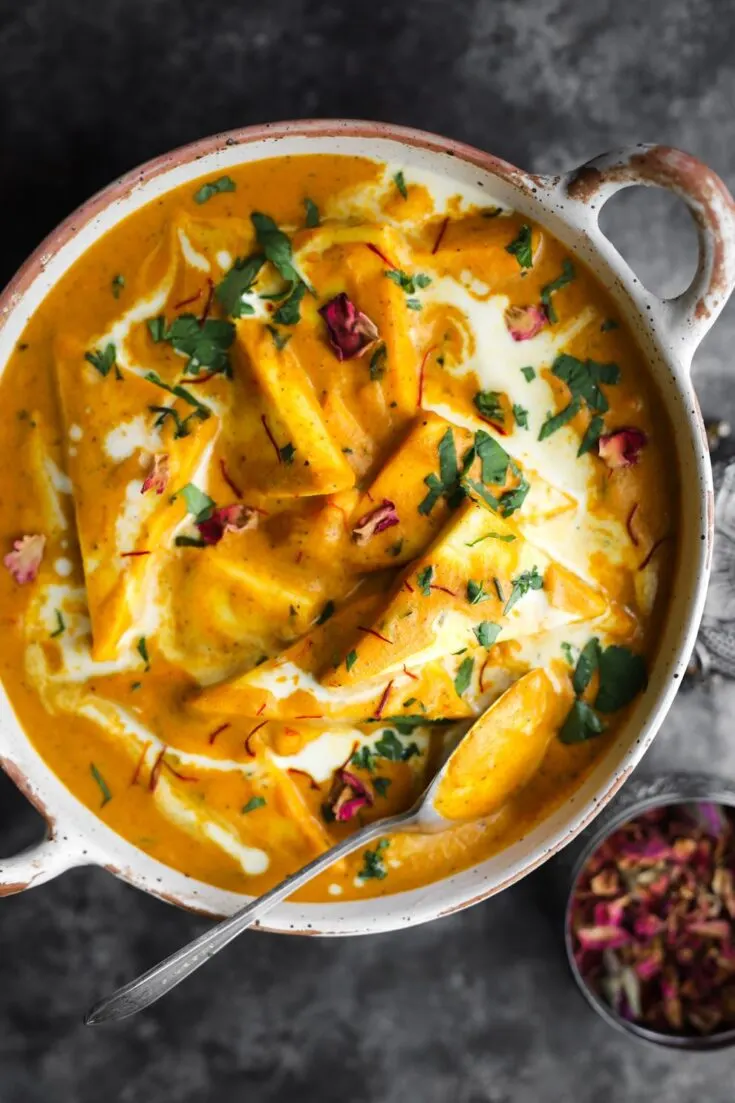
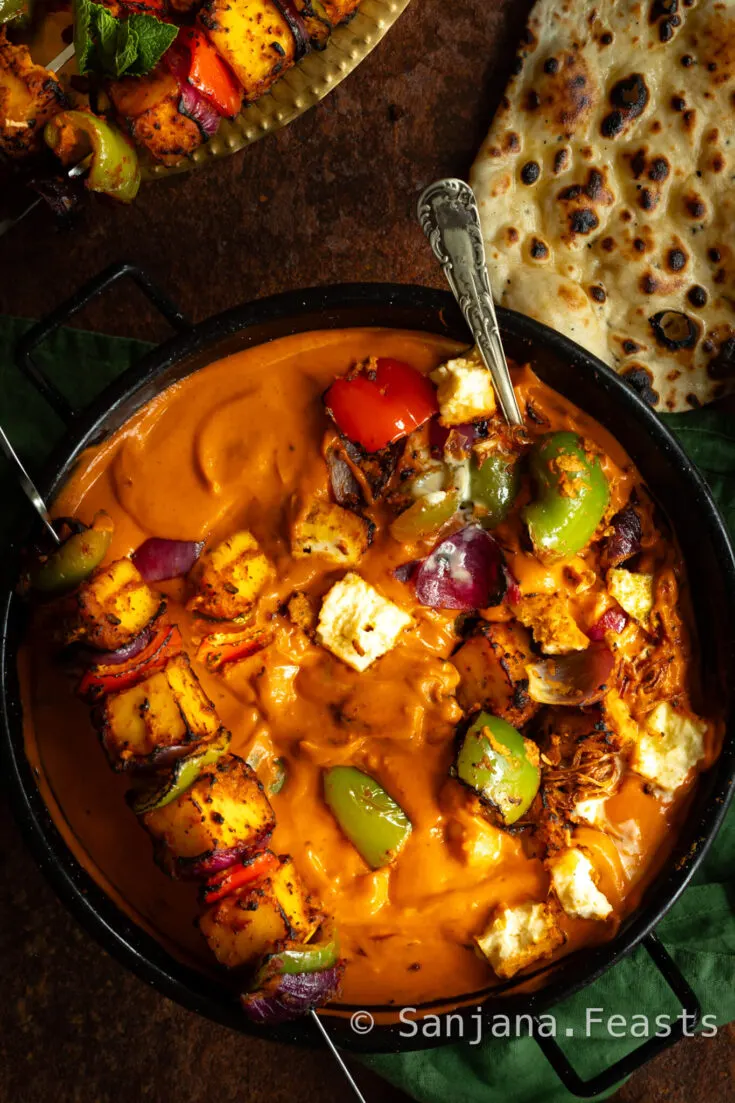
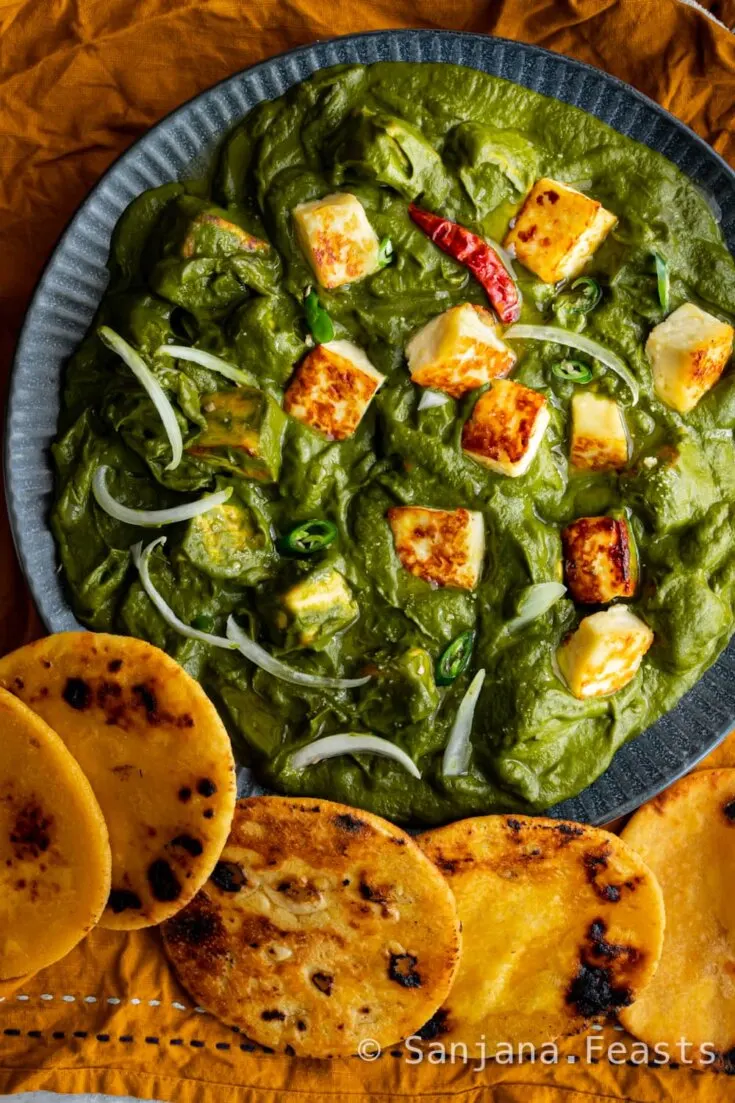
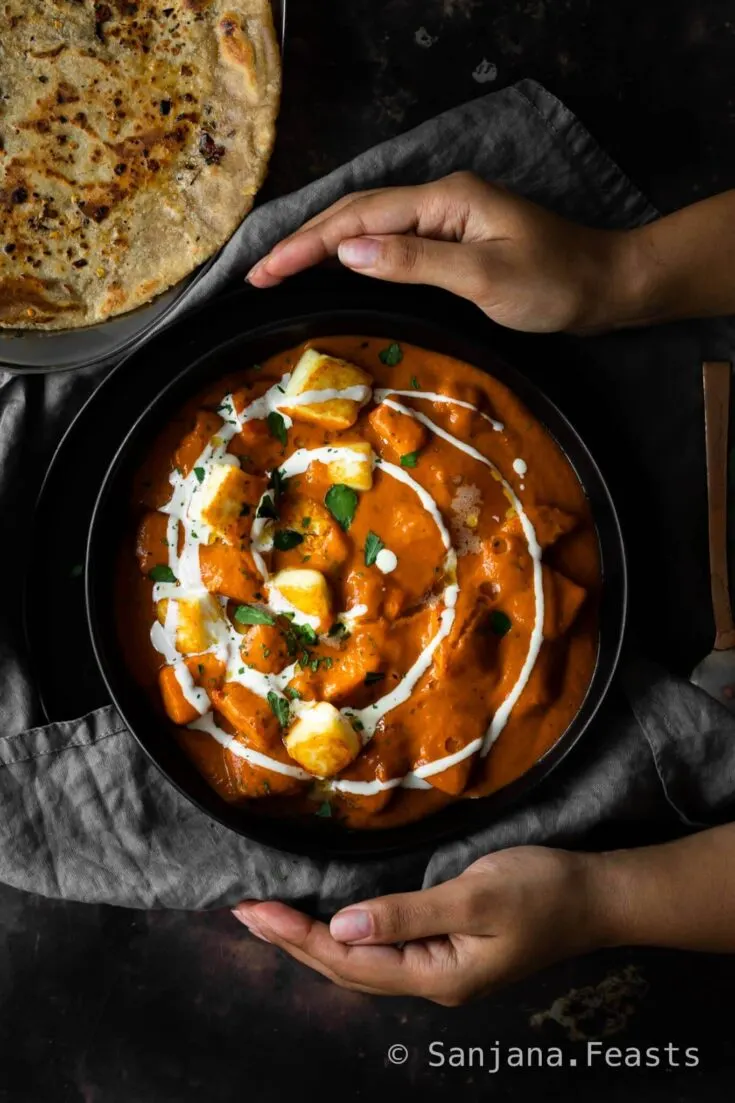
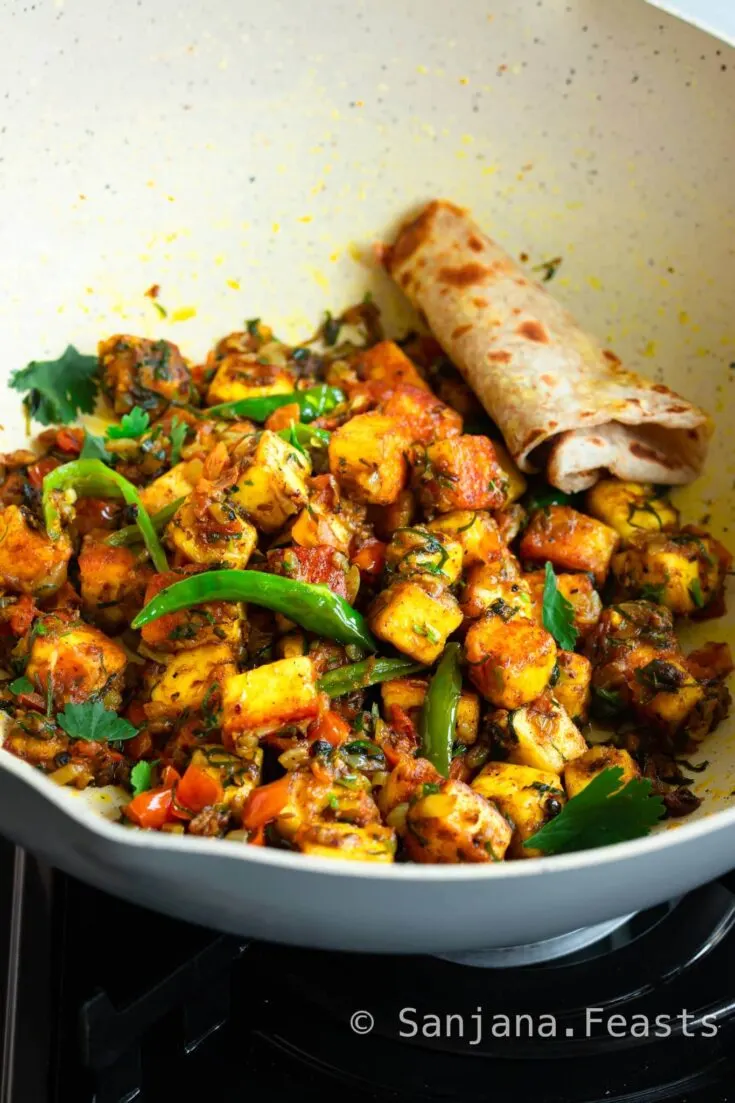
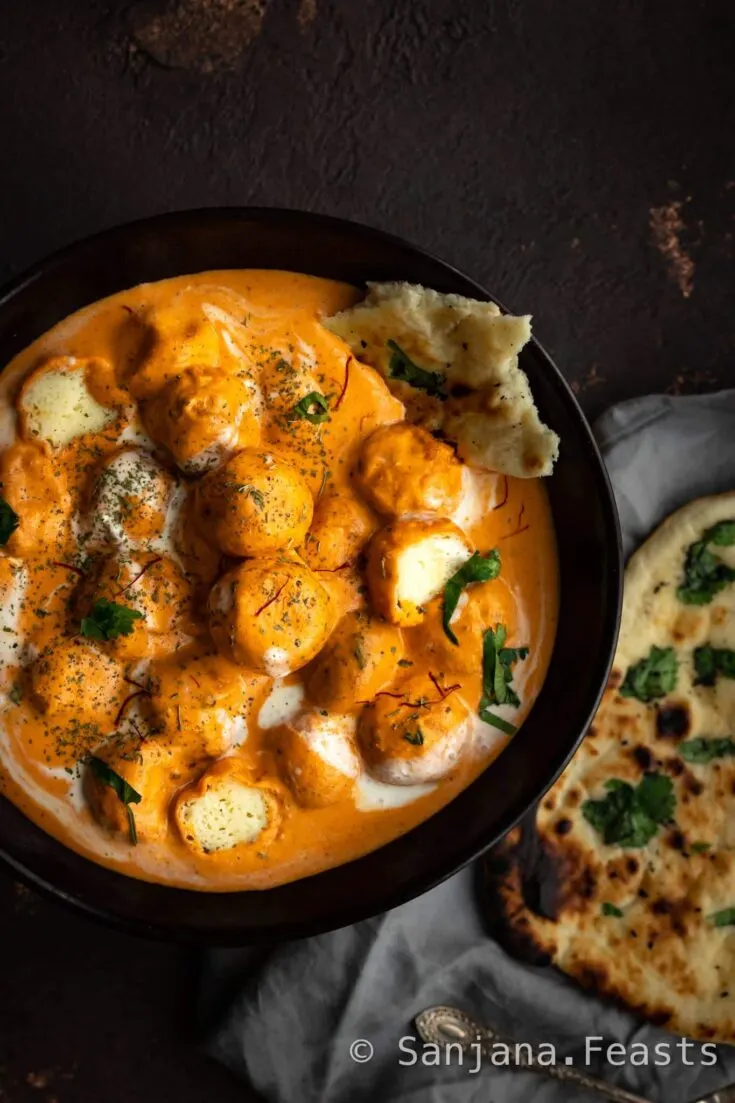
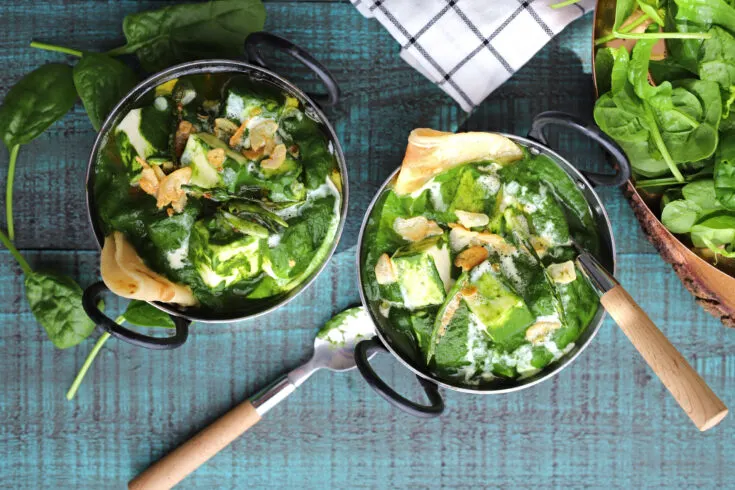
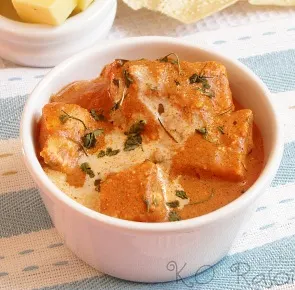
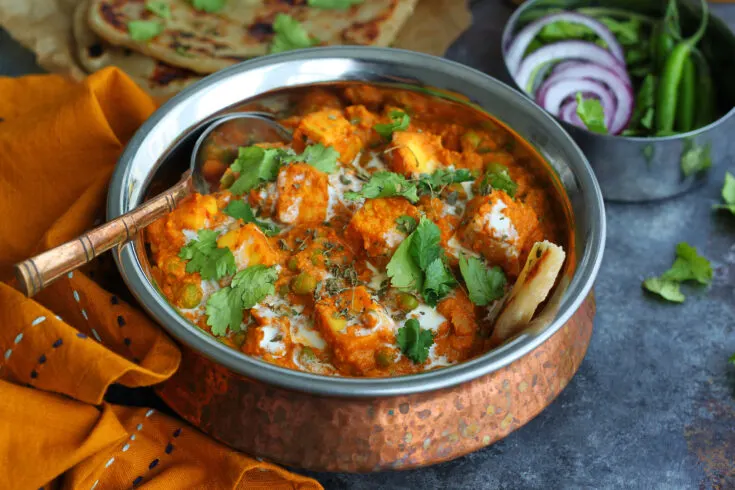
Anisha
Monday 8th of April 2024
Hi So I made this for the first time and I found it very bitter. Would love to know what I can do to fix it.